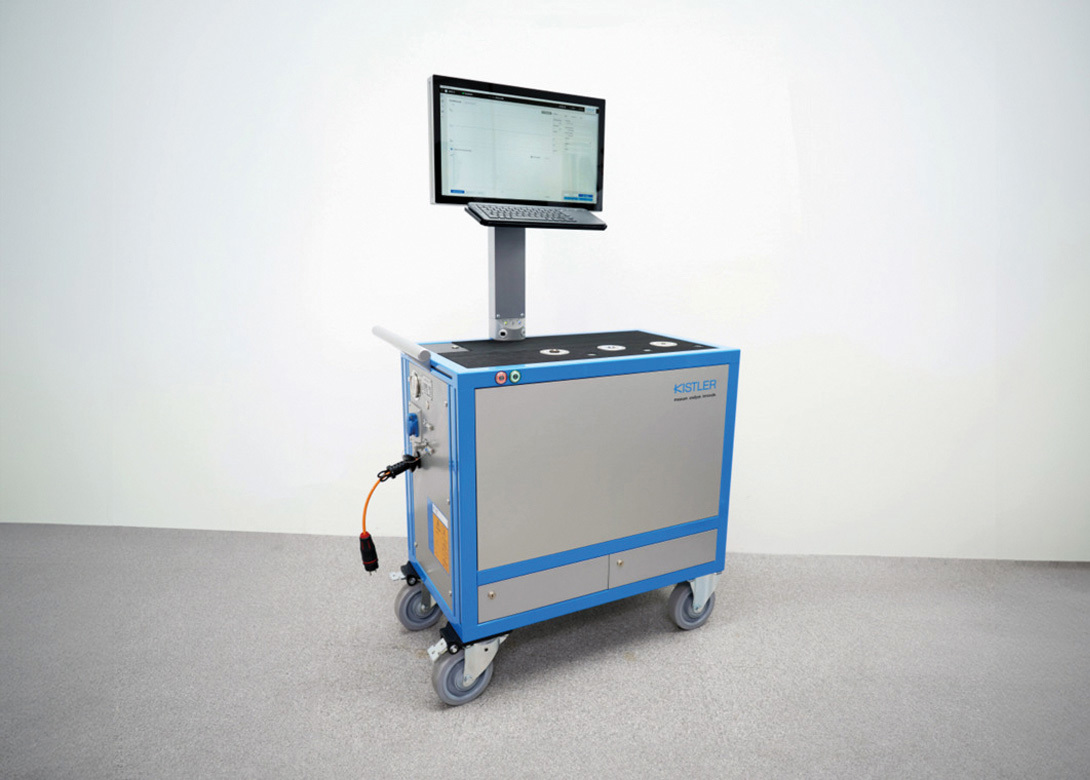
Kistler Group has introduced a new cerTEST inspection system for standards compliant torque tool testing, effectively a fastening simulator that collects exact and highly reproducible data.
Kistler’s new way of fast, precise and standards compliant fastening simulation, analyses the capabilities of torque tools with up to four integrated simulators, and over a 0.2Nm to 500Nm torque range. The system is designed for mobile testing in shift operation and is equipped with a built-in rechargeable battery with a run time of up to 16 hours. The corresponding user-friendly CEUS software solution guides users through the test, while also taking care of documentation.
Whether for the automotive industry, aviation or robotics, bolted joints have to withstand high forces and adverse conditions. This is why quality assurance of fastening processes starts with the tools used. Torque tools, such as cordless, rotary and impulse nut runners, are subject to internationally recognised standards, such as VDI/VDE 2645 Sheet 2, VDI/VDE 2647, and/or DIN EN ISO 5393. To comply with these norms, users must verify their machines’ capability through regular tests.
That’s where the new cerTEST inspection system comes in, enabling users to check their tools safely and in compliance with given standards. The long-lasting, rechargeable battery enables certification directly on the assembly line. The system, with four slots for customisable fastening simulators, can have additional fastening simulators connected externally, if required, enabling tests of up to 6,000Nm to be conducted.
This allows for quick and efficient machine capability tests of electric, pneumatic and hydraulic tools, as well as impulse nut runners. It also means torque tools can be removed from the production environment and inspected without any special preparation. The tools are simply adapted to the corresponding fastening simulator for inspection, with the software selecting the appropriate simulator, depending on the torque parameters.
An LED ring marks the selected simulator and also indicates the specified direction of rotation for testing. A sensor precisely measures the torque and the angle of rotation of the tool; the simulator can also collect data on the speed achieved during inspection. A colour-coded evaluation of the tested object is available via the software, and on the simulator, immediately after the test procedure. As alluded to at the start, the whole inspection set-up, and the high resolution measurement electronics, ensure minimal measurement uncertainties and optimised reproducibility of all measured values.
As for the collected data, this is displayed directly on the wide screen of the cerTEST device. With the help of Kistler’s CEUS software, users can introduce individual limits, specifications and tolerances into the evaluation, thereby ensuring standards compliant inspection, as well as being able to implement their own stricter specifications.
The web-based CEUS program not only guides users through the measurement, step by step, but also saves different measurement settings. This means that users have to specify the measurement parameters for the tested torque tools only once. The software also creates an individual measurement history for each tool and automatically saves inspection records, making them quickly available when required.
www.kistler.com/INT/en/fastening-technology/C00000022

Will joined Fastener + Fixing Magazine in 2007 and over the last 15 years has experienced every facet of the fastener sector - interviewing key figures within the industry and visiting leading companies and exhibitions around the globe.
Will manages the content strategy across all platforms and is the guardian for the high editorial standards that the Magazine is renowned.
Don't have an account? Sign Up
Signing up to Fastener + Fixing Magazine enables you to manage your account details.